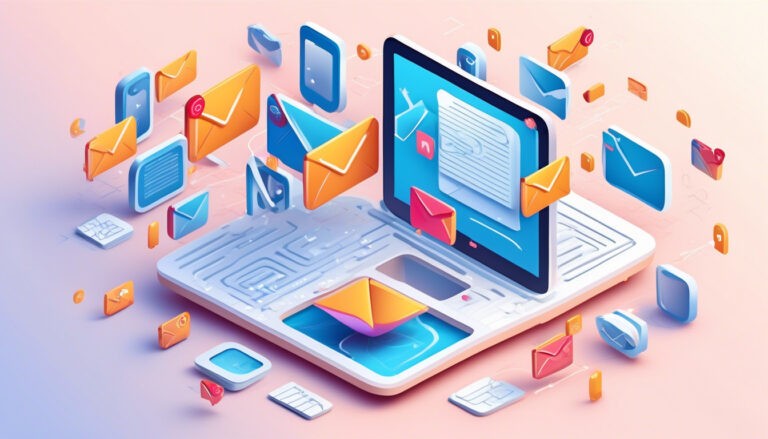In today’s digital landscape, email marketing remains a powerhouse in content distribution strategies, proving it’s far from being obsolete. It’s a tool that not only reaches out to vast audiences but also personalizes the experience, enhancing user engagement and retention.
This article explores how businesses leverage email marketing to maximize their content’s reach, ensure it resonates with the intended audience, and drives meaningful interactions.
From crafting compelling subject lines to segmenting lists for targeted campaigns, we’ll delve into the tactics that transform emails from mere communication into a pivotal content distribution channel.
Benefits of Email Marketing
Email marketing offers you significant benefits, including increased reach and cost-effectiveness. It allows you to connect with a vast audience worldwide without the hefty costs associated with traditional advertising. You’re not just saving money; you’re also tapping into a proven channel that boasts a high ROI. For every dollar spent, email marketing can yield an average return of $42.
It’s not just about sending messages—it’s about sending smart, cost-effective communications that grow your business.
Moreover, the flexibility of email campaigns means you can launch them anytime, adjusting quickly to market demands or your own strategic shifts. This agility ensures you’re always relevant and responds promptly to any
opportunity or challenge that arises, keeping you a step ahead in your market.
Targeted Audience Engagement
Email marketing excels in engaging your specific audience by leveraging personalized content tailored to their interests and needs. By analyzing subscriber data, you can segment your audience based on demographics, buying behavior, or engagement levels. This ensures that the messages you send resonate more deeply, making each email feel like a direct conversation rather than a broad, generic blast.
Using triggers such as recent purchases or website activity, you can automate personalized emails that feel timely and relevant. This not only boosts open rates but also enhances the chances of clicks and conversions.
Remember, the more relevant the content, the more likely you are to keep your audience engaged and responsive to your email campaigns.
Amplification of Reach
Email marketing significantly expands your reach, allowing you to connect with a broader audience efficiently. By leveraging the vast networks of people who’ve opted into your emails, you’re able to tap into new markets and demographics.
When you send out your content, it’s not just hitting the inboxes of existing customers; it’s potentially being forwarded, shared on social media, or discussed in other online forums. This means your content has the chance to be seen by thousands, if not millions, more than through traditional marketing channels alone.
You’re not just casting a wider net—you’re ensuring that your message travels further and faster. This exponential increase in visibility can drive higher traffic, enhance brand awareness, and ultimately, boost sales.
Remember, every email you send has the potential to reach corners of the globe you’ve never touched before.
Personalized Content Delivery
Personalized content delivery allows you to tailor your messages to meet the specific needs and interests of each recipient. By customizing your emails, you’re not just sending out broad, one-size-fits-all messages; you’re creating a connection. This approach not only enhances engagement but also increases the likelihood that your content resonates on a deeper level.
When you personalize, you’re showing that you value the recipient’s preferences and time. It’s about crafting messages that speak directly to them, whether it’s through addressing them by name, referencing past interactions, or suggesting products based on their purchase history. By making your emails feel more relevant and less generic, you significantly boost the chances of your messages being opened and acted upon.
Tracking and Analytics
Tracking and analytics enable you to measure the effectiveness of your personalized email campaigns, providing insights into what works and what doesn’t. By examining open rates, click-through rates, and conversion metrics, you’ll understand which emails resonate with your audience and which fall flat. This data helps you tweak your approach, ensuring you’re always improving and engaging more effectively.
You’ll also see how different segments react differently to your campaigns. Are your tech-savvy customers clicking more than others? Do early morning sends increase open rates? With these analytics, you’re not just guessing; you’re making informed decisions.
Plus, tracking the journey from email to purchase can highlight the direct impact of your email efforts on your bottom line.
Integration with Content Strategy
Integrating your email marketing with your content strategy can significantly amplify your messaging and drive engagement. By aligning your email campaigns with the core themes and objectives of your broader content initiatives, you’ll create a cohesive experience for your audience. Think of your emails as extensions of your content strategy, not isolated blasts. They should reflect your brand’s voice and provide value that compleplies with what you’re publishing elsewhere, such as your blog or social media platforms.
This approach ensures that every piece of content, whether delivered via email or another channel, resonates with your targeted audience and supports the same goals. It’s about making all elements work together seamlessly to reinforce your message and enhance the overall impact.
Building Subscriber Relationships
Building strong subscriber relationships is essential for turning your email list into a loyal audience. You’ve got to engage them with personalized content that speaks directly to their needs and interests. Remember, it’s not just about sending emails; it’s about creating a conversation. Ask for their feedback and give them what they ask for. Show them you’re listening by tailoring your messages based on their responses and behavior.
Consistency is key. Regular updates keep you on their mind, but don’t overwhelm them. Balance is critical; you don’t want to be forgotten, nor become a nuisance.
Each email should add value, whether it’s through insightful tips, exclusive offers, or compelling stories that resonate. Build that trust, and they’ll stick around.
Improving Content Performance
To improve your email content performance, analyze the engagement metrics after each campaign to identify what captures your audience’s attention. Look at open rates, click-through rates, and conversion data to see which subjects and messages resonate the most.
Don’t just send emails; tailor them to meet the needs and interests of your subscribers. Test different formats and timing to find out what works best.
Remember, it’s also vital to keep your content fresh and engaging. Rotate topics to cover a broader range of interests that appeal to your audience. Use compelling visuals and strong call-to-actions to motivate readers to take the next step.
By refining these elements, you’ll enhance your content’s effectiveness and keep your audience coming back for more.
What are the legal implications of using email marketing for content distribution in different countries?
When using email marketing for content distribution in different countries, you must be aware of the legal implications.
Ensure compliance with local regulations regarding data protection, spam laws, and consent requirements to avoid penalties.
How does email marketing integrate with other digital marketing strategies like social media and SEO?
You can enhance your digital marketing strategy by integrating email marketing with social and SEO. Use emails to drive traffic to social platforms and optimize content for search engines.
This synergy boosts your online presence.
What are the environmental impacts of large-scale email marketing campaigns?
When considering the environmental impacts of large-scale email marketing campaigns, be mindful of server energy consumption and data storage needs.
Optimize your email strategies for efficiency to reduce your carbon footprint and minimize waste.
Conclusion
In conclusion, email marketing has a significant impact on content distribution. By leveraging targeted email campaigns, businesses can effectively reach their audience with valuable content.
Through strategic use of email marketing, companies can increase brand awareness, drive website traffic, and ultimately boost engagement and conversions.
Embracing email as a content distribution channel can lead to tangible results and foster stronger relationships with customers. Email remains a powerful tool in the digital marketing landscape.





